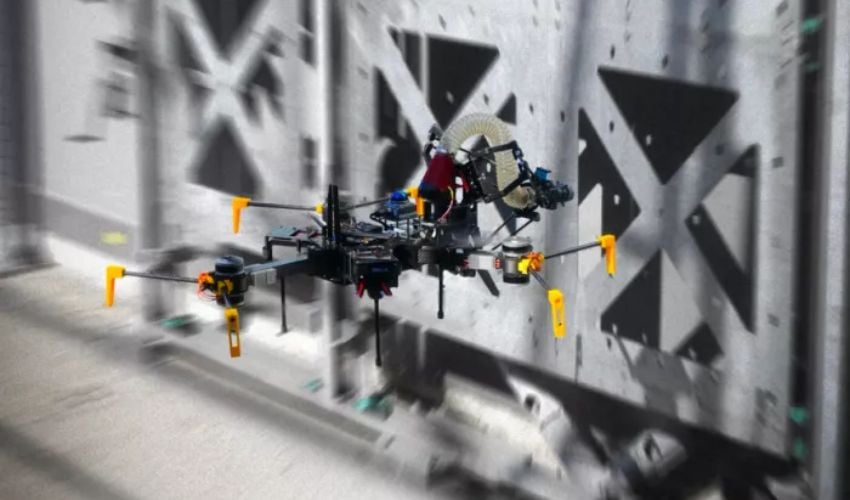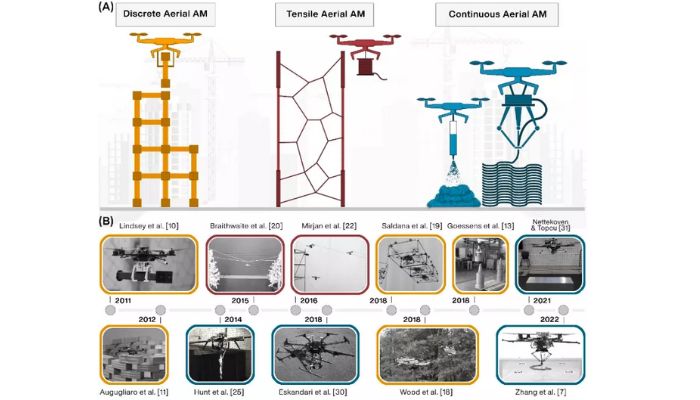Aerial Additive Manufacturing: Architecture with 3D Printing Drones

Typically, standard 3D printing is limited by a maximum print volume. 3D printing with robotic arms offers somewhat of a solution, with a greater range of motion and volume, but even here, the technology has a restricted capacity. A research group with members from University College London, EPFL, EMPA and Imperial College London wants to face those limitations, and in May, they released a study on 3D printing with drones. The study reveals gaps in research for the emerging field of Aerial Additive Manufacturing (Aerial AM).
Drones would not face the same limitations as standard 3D printing, as they can print vertically and horizontally over long distances. Promising, yes, but the research has only just begun. The university team has identified knowledge gaps and highlighted the first key problems that must be addressed to develop the technology. The first issue they identify is material durability. Second, they want to address a localization system for outdoor use, and third, the coordination of several drones at the same time.

The three different methods of Aerial AM as proposed by the study
To provide initial solutions to these problems, the study looks at three specific methods of how 3D printing using drones could work. Drones could place individual components, produce components using ropes or print continuous layers by extrusion, similar to FDM printing. The broad aim of the project is to find sustainable and innovative solutions to the global housing shortage and infrastructure problems caused by urbanization and population growth. According to the authors, Aerial AM should play a major role here and provide particularly sustainable solutions.
Extensive testing in various environments is required to implement the project. To this end, the so-called “DroneHub” was inaugurated – a hall in which the drones can be tested in various simulated weather situations and conditions. Initial tests have already shown that quick repairs to structures are possible. The researchers are also investigating modular assembly techniques that will facilitate the widespread use of Aerial AM. The team is thus taking important first steps towards closing this immensely important research gap. Find more information HERE.
What do you think of Aerial AM? Let us know in a comment below or on our LinkedIn or Facebook pages! Plus, don’t forget to sign up for our free weekly Newsletter to get the latest 3D printing news straight to your inbox. You can also find all our videos on our YouTube channel.
*Photo Credits: UCL








